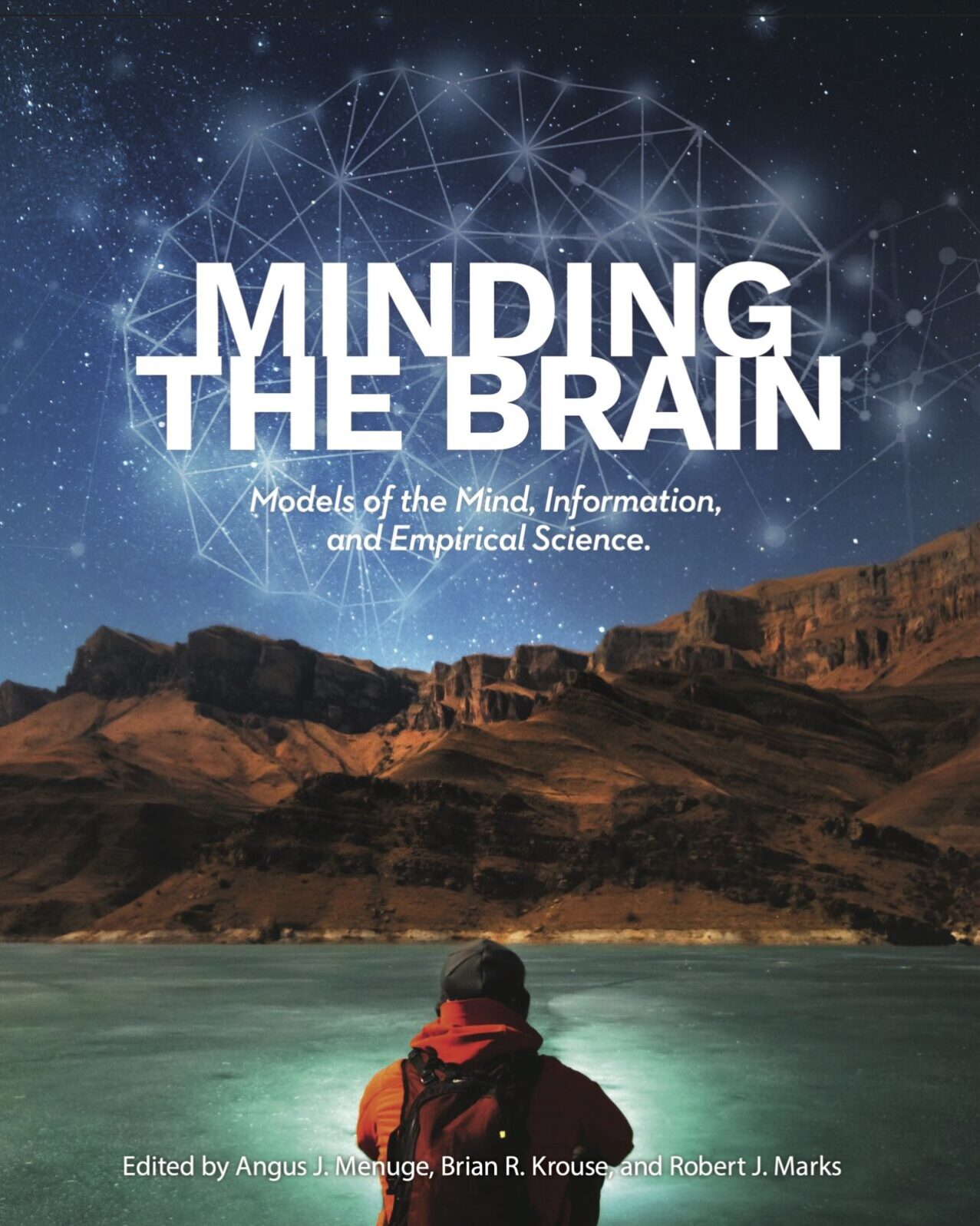A Philosopher Explains: How the Soul Relates to the Body
James Madden explains a philosophical approach to the soul called hylomorphism which, he argues, can benefit neuroscienceHere’s a defense, from Minding the Brain (Discovery Institute Press, 2023) of hylomorphism, an increasingly popular way of thinking about the human soul that unites it fully with the body — without denying either its immateriality or its immortality. These are excerpts from the chapter by Benedictine College philosophy professor James Madden, “Mere Hylomorphism and Neuroscience.”
—

The ancient doctrine of hylomorphism has made something of a comeback in recent years among both philosophers working in the metaphysics of material composition and philosophers of mind. It is attractive to the latter, because hylomorphism promises to split the difference between materialism and more robust forms of dualism in intuitively satisfying ways. Nevertheless, hylomorphism as it has been applied to the mind-body problem is not without its critics. On the one hand, many worry that hylomorphism is really just an obfuscating version of substance dualism conveniently trading between incompatible accounts of the soul either as some sort of non-substantial, abstract entity or an individual substance-like entity. On the other hand, some worry that hylomorphism is really just a “polite form of materialism” that offers nothing more intuitively satisfying than standard forms of non-reductive physicalism, except for the fact that its talk of “souls” is attractive to those concerned with squaring materialist approaches to mind and orthodox religious views.
Hylomorphism integrates philosophy of mind and neuroscience
My hunch is that these criticisms are less due to a failure to understand hylomorphism on the part of its critics, and more so as a result of the way in which hylomorphism is presented by its proponents. Aristotle’s original proposal for a distinction between matter and form was not intended as a doctrine narrowly construed for the philosophy of mind, and even less so to solve anything akin to the modern mind-body problem that has vexed us these last few centuries. Rather Aristotle’s hylomorphism is a holistic doctrine that can only be understood as it incorporates and synthesizes elements from his philosophy of nature, metaphysics, teleological ethics, and philosophy of “mind.” In what follows, I will present Aristotle’s hylomorphism as it can be extracted from some of the more salient moments in his Physics, Metaphysics, Nicomachean Ethics, and De Anima. I call the position I will construct “Mere Hylomorphism,” because I take it as the minimal doctrine one must accept to be a hylomorphist in continuity with Aristotle, though I am aware that other versions worthy of consideration are on offer. Moreover, I do not propose Mere Hylomorphism as a definitive interpretation of Aristotle, but simply as a plausible position that can be constructed from some of his most central texts. I will recommend Mere Hylomorphism on the grounds that it reveals hylomorphism as having intuitive appeal while clearly being neither a sly dualism, nor a polite materialism. We will also see that Mere Hylomorphism is recommended by the fact that it underwrites an integration between philosophy of mind and neuroscience.
…
What is meant by the “soul” of an animal or tree?
The soul is then the readiness to follow a certain way of life that is desirable for its own sake for a certain kind of organism, and that manner of flourishing is determinative of the soul for that kind of organism. In other words, for Aristotle, the soul is ultimately a ready tendency toward a type of distinctive happiness or flourishing that counts as the fullest being of that kind of thing played out over its entire history.

Thus, the Aristotelian hylomorphist sees nature as rich with souls. All living things are “compounds” of souls and material parts. That is no trivial claim. Hylomorphism (of this sort, and there are other versions) has profound philosophical ramifications, as it rules out any kind of strict reduction of organisms to their constituents. Organisms are not just collections (ultimately) of subatomic particles. Rather, nature is suffused with entities irreducible to their composing parts, living things, which cannot be understood solely in terms of their constituents, but must be seen in light of their definitive ready disposition toward a kind of life, their souls. In fact, Aristotle himself thought that the soul is the object of proper scientific study, at least for the life sciences. The distinctive being-able of kinds of living things is what the biologist is ultimately out to understand and explain.
At the same time, we must be careful not to make too much out of this talk of souls. In fact, I often wish we had a different word. When we hear “soul” today, we think of ghosts, substantial minds, our truest selves, angels, etc. That is, we think of a soul as a kind of substance that interacts with a body in the way a virus is a substance that interacts with an organism. Notice, however, that the hylomorphist means no such thing by “soul.” The soul is not a substance, but the definitive being-able of a substance. We also tend to use the word “soul” in ways that primarily associate it with consciousness or otherwise psychological attributes. The soul is supposedly a thinking substance, or the bearer of my psychological as opposed to my merely physical properties. Notice, however, that the Aristotelian path to the soul does not run through consciousness at all. Aristotle does not introduce the notion of a soul to account for thinking things but living things in general (some of which are thinkers). The soul is posited to solve problems about the identity and unity of complex living things, and there are plenty of non-conscious things that have souls.

When the Aristotelian claims that even plants have souls, that is not because she believes there are ghosts or minds inhabiting the trees. It is just to say that there is a definitive being-able of the tree that marks it as something over and above the aggregate of its parts. I belabor this point so as to disabuse the reader of the common tendency to think of hylomorphism as a sort of substance dualism. The soul and the organism are not separate, individuated substances. Rather, the former is the actuality of the latter, and as Aristotle puts it, “we should not inquire whether the soul and the body are one…. For, since one and being are said of things in many ways, the controlling way is actuality.” Of course, in some living things, the definitive being-able is a realized capacity for certain conscious or psychological activities, and the complete life of such organisms will include the exercise of such psychological capacities. Part of being a cat is being-poised-to hunt certain types of prey, respond to injury, pursue particular mates, etc., and all these definitively feline activities are hard to envision without the cat being conscious. Thus, Fluffy’s soul is, in part, a being-able to engage in particularly feline consciousness. This is not at all to say that Fluffy’s soul engages in such consciousness. Rather it is Fluffy that engages in this distinctively feline consciousness. Fluffy’s soul is (in part) the being-able to engage in such activity, but it is Fluffy, as a biological whole, that so engages, or at the very least hylomorphism is consistent with such an emergentist or holistic view of consciousness.
…
So what makes humans different?
Human rationality then requires us to posit a special kind of mental content on the part of humans. That is, we have among our intentional objects concepts or norms that are trans-temporal and trans-spatial. The concept of modus ponens is identically instantiable across an infinity of possible physical instantiations. In fact, modus ponens is indifferent to its physical instantiation. Almost anything, under the proper interpretation, can be an instance of modus ponens. In fact, understanding a logical concept or norm such as modus ponens is to be able to recognize its physically disparate instantiations as instantiations of the same abstract concept. Whatever else physical things are, they are not indifferent to their material instantiation, and therefore the objects of conceptual explicitness are not anything physical, even in a broad sense. The objects of our distinctively human thinking are not immaterial only in the sense that a cat’s knowing its way around is immaterial, i.e., there is no discrete material object or event with which it can be identified. Rather, conceptual contents are immaterial in the much stronger sense that they are not occurrences in space or time at all. Smitty’s articulation of the conceptual norms grounding his thinking may be an event in space-time, but the intelligible content of that event is not. The thought expressing this articulation is therefore more than what can be taken as material in any sense. Since the content of thought is abstract, and the thought just is the articulation of that content, likewise the thought is abstract. As Aristotle puts it: “That is how it is in the case of the understanding. And it is an intelligible object in just the way its intelligible objects are, since, in the case of those things that have no matter, what understands and what is understood are the same.”

Aristotle further claims that the activity of this understanding is itself “separable, unaffected and unmixed… and it alone is immortal and eternal.” Thus, in this sense, we should conclude that the grasping of a concept is not a material power in the same way that the other vital functions of the human organism (or all other organisms) are material. There is something non-bodily about the human (normative) mode of rationality, because it involves conceptual contents indifferent to their material instantiations. That is not to say that we therefore should identify our conceptual articulations with the activities of a disembodied agent, a mind or some such, but only that human rationality involves a participation in something that is transcendent of the material world.
Aristotle takes the human soul as uniquely separable from matter, but not because he thinks human souls exist as discrete individuals without matter. Rather, the soul is separable from matter in the sense that its exercise brings the human organism into participation with something that is truly immaterial in Aristotle’s sense (eternal, unchanging, invariant, etc.). Aristotle famously defines the divine nature as an eternal act of self-reflection, i.e., thinking about thinking. Notice, then, that Aristotle defines both the exercise of distinctive human rationality and the nature of divinity as self-reflective thought. Such thought makes explicit the normative grounds of one’s thinking. When human beings manage to bring the true normative structure of the universe into explicit conceptual grasp, their act of thought brings them into a sort of union with Aristotle’s god. Once again, Aristotle takes these transcendent acts of conceptual articulation, or contemplation, as constitutive of human happiness. Though the Mere Hylomorphism account of human nature is certainly not a sly form of substance dualism, it is likewise quite impolite by any materialist standards.
…
What hylomorphism can offer neuroscience
All of this is to say that Mere Hylomorphism can propose speculative hypotheses for human flourishing based on the conceptual and phenomenological analysis of the soul as the distinctive being-able of the human organism, and the neurosciences can in principle confirm or disconfirm these proposals. Mere hylomorphism is uniquely situated for this partnership with neuroscience, as opposed to other philosophical stances, because of its strong affirmative stance toward embodiment (the soul is a definitive disposition of a living human organism, that can even be located primarily in the central nervous system) and its equally strong non-materialist account of human rationality and ultimate flourishing. In other words, Mere Hylomorphism can provide the clinically minded neuroscientist with a realistic and yet holistic perspective on human nature, which can generate concrete, verifiable research proposals. This exchange between Aristotelian philosophy and neuroscience may then have welcome applications for the advance of humans toward flourishing (e.g., the treatment of recalcitrant forms of depression in the case I mention above), as both disciplines are ultimately aimed at the full actualization of human-being.
—
You may also wish to read: Belief in the soul is found in every time and place. Substance dualism holds that the soul and the body are two different types of entities. The materialist philosophers ground war on “substance dualism” is really a war on what all human beings innately believe.
